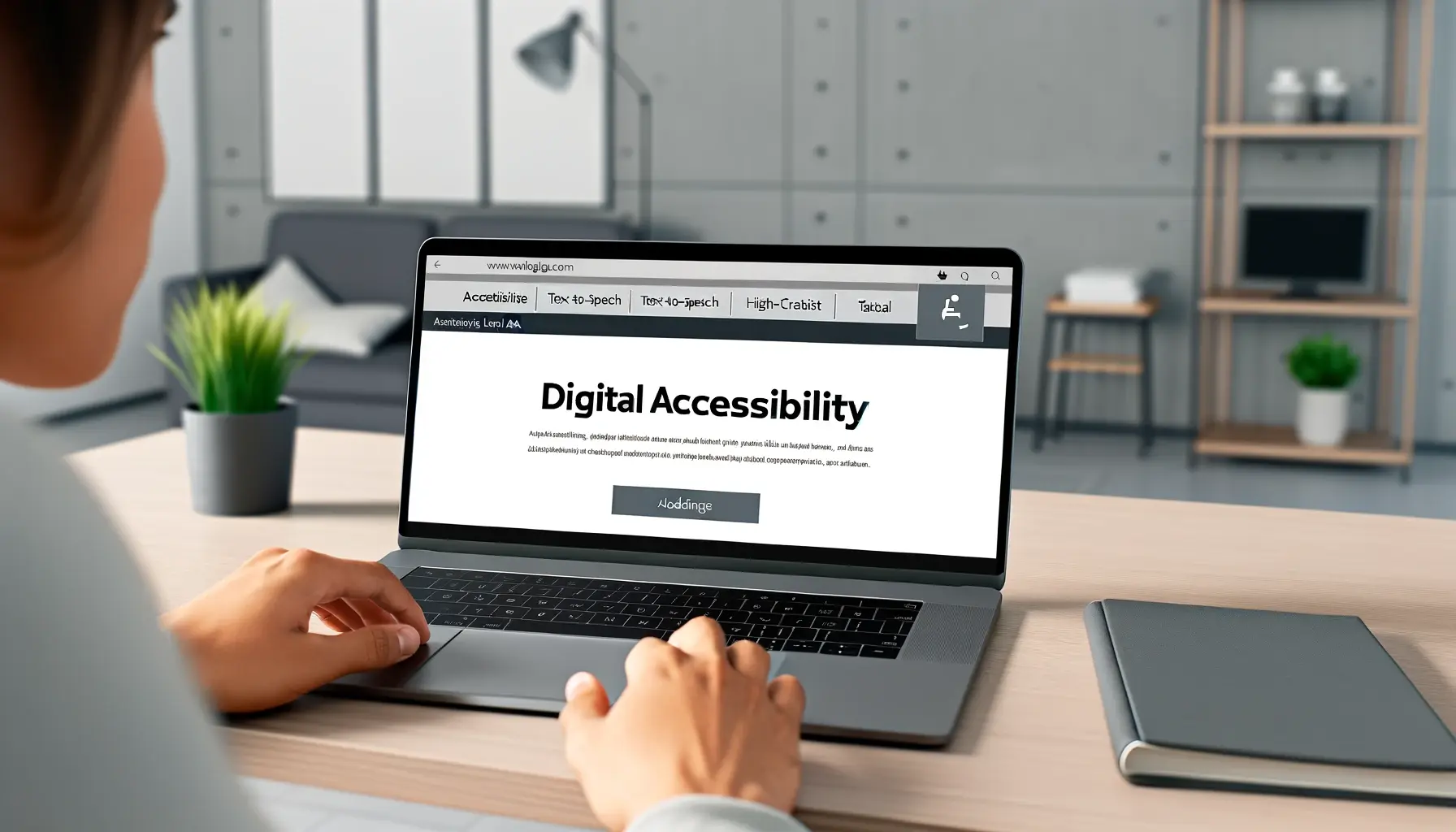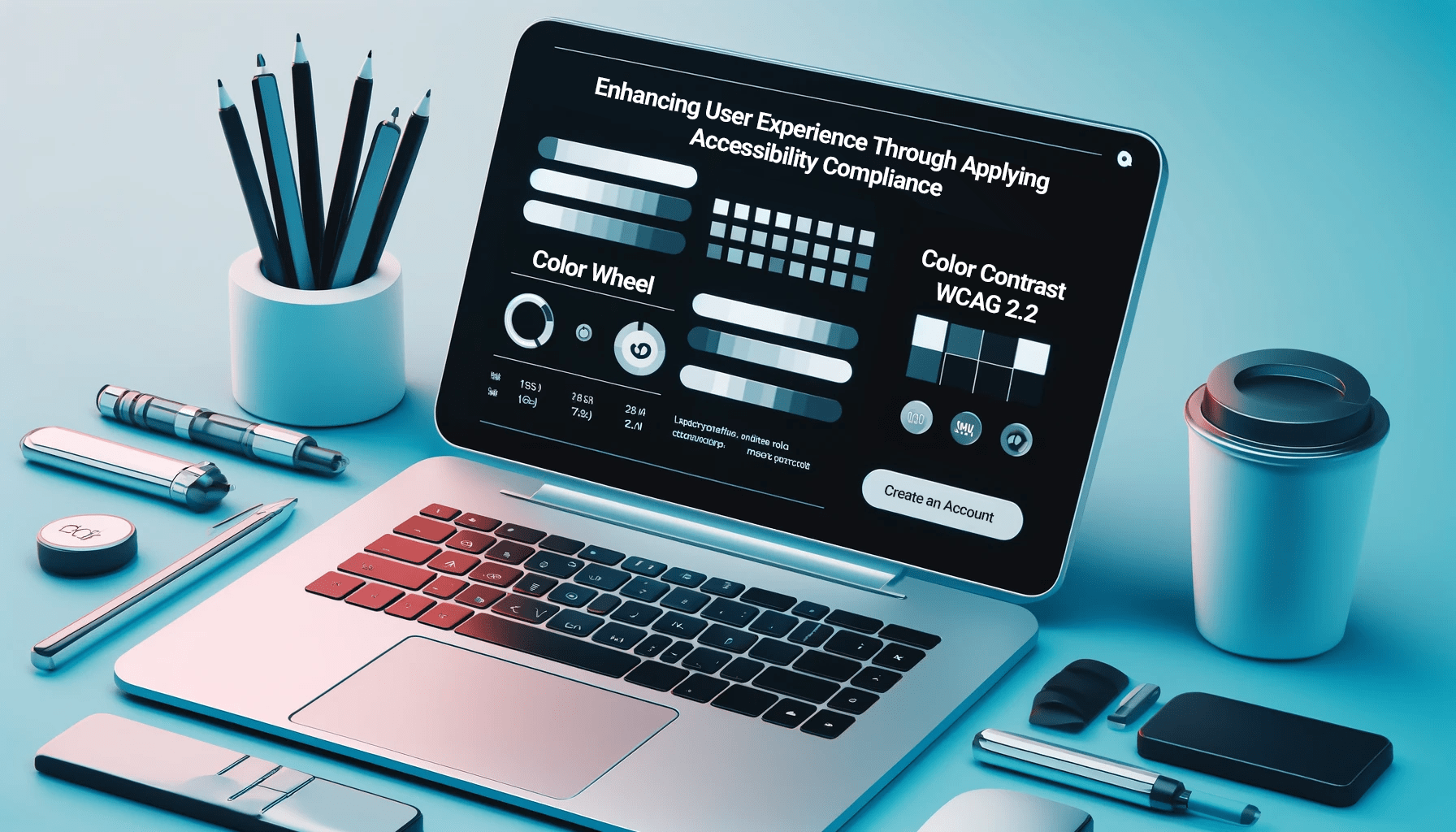Have you tested your website recently? Not for common error pages or new customer journey maps but to see if users with disabilities can use the website as seamlessly as those without disabilities.
Every business and organization should conduct regular accessibility testing to ensure their website content can be accessed and used by people with disabilities. Ultimately, the goal is to identify and remove barriers that prevent people with disabilities from accessing and using your website.
Not only is accessibility testing the right thing to do, but new laws are constantly being introduced that require websites to adhere to online accessibility standards.
Web accessibility testing standards and guidelines.
One of the most common accessibility laws is the WCAG.
WCAG stands for Web Content Accessibility Guidelines. The current versions of the guidelines (WCAG 2.0 and WCAG 2.1) were created by the World Wide Web Consortium (W3C) as a standard to provide more accessible web content to people with disabilities.
As businesses and organizations continue to shift their products and services online, countries and provinces are implementing new laws and regulations to ensure citizens with disabilities can still access online products and equally adapt to digital services.
For example, in Canada, we have the federal Accessible Canada Act (ACA), which mandates all public sector organizations to implement its accessibility regulations. Failure to do so can result in large fines and lawsuits.
Increasing development and regulation of accessibility standards make the need for accessibility testing inevitable for companies and organizations that have a website.
What is accessibility testing?
Accessibility testing is the act of examining various website features to determine if they meet accessibility standards. Accessibility issues are then fixed and the website is retested to ensure it is accessible to all.
Testing websites is actually a common practice. Chances are you already conducted some tests on your website, like:
- Testing for responsiveness to ensure users can access the website on their mobile devices
- Testing for broken links
- Testing the website’s security
- Testing search engine optimization to maximize the website’s ranking on a search engine results page
- Testing the website’s response speed to ensure pages don’t take too long to load
In addition to the tests above, an accessibility test checks your website’s accessibility features. For instance, you want to check if:
- A mobility-impaired person can easily navigate the website and fill out a form using just the keyboard.
- A visually impaired person’s screen reader can accurately decipher everything on the page and read it back to the person in a way that makes sense.
- A person who is hard of hearing can read the closed captions in video tutorials on the website.
As you perform accessibility testing, you examine these critical components and create a report on the accessibility barriers that need fixing.
Thankfully, because of continuous improvements in accessibility standards for companies and organizations, there are various tools and methods available for accessibility testing.
For instance, experts use a manual test, an automated test, and a user test to generate the website’s accessibility report, using AI (Artificial Intelligence) tools to enhance the process.
Our blog How to conduct an accessibility test on your website reviews the details of these tools and tests for you to use.
But why should I take the time to perform accessibility testing?
Over 20% of the Canadian population is estimated to have some disability. That means millions of disabled Canadians seek to use the same products and services as those that aren’t disabled. However, disabled people face accessibility barriers due to non-accessible features.
Not only is increasing the company’s or organization’s accessibility the ethical thing to do, but there are also beneficial factors that further encourage accessibility enhancements.
1. Society is more likely to interact with companies and organizations that promote inclusivity.
It’s been shown that Millennials and Gen Z are more likely to interact with companies and organizations that take the initiative to create equal opportunities. This includes removing accessibility barriers people with disabilities commonly face daily.
We see this with “cause marketing”. Companies that want to show they’re socially responsible invest in cause marketing and actually promote their stance on equality and inclusion.
2. Companies and organizations avoid expensive fines and lawsuits from both the government and consumers.
The more strict accessibility standards are enforced on the federal level, the more likely penalties and lawsuits can surface if regulations aren’t followed. For example, the Accessible Canada Act (ACA) fines alone can range between $250 to as high as $150,000 if public sectors don’t follow its regulations.
Investing the time to follow accessibility regulations can save your company or organization thousands of dollars in the long run.
3. Ensuring your website is consistently accessible increases positive user experience.
Your website is at a great disadvantage if you have not considered the importance of user experience.
User experience is the overall experience someone has when interacting with a website or a mobile app. Ultimately, user experience is commonly associated with how easy or pleasing it is to use or navigate something.
These days, implementing user experience into the marketing field has become a crucial requirement. As a result, there are roles and departments specifically to research, understand, and implement the best strategies to help a user have a seamless experience on a website or mobile app.
By conducting accessibility testing and updating your website to enhance accessibility features, you improve the user experience for those with disabilities and create a positive experience they can share with others.
What are the challenges and limitations of accessibility testing?
Ensuring your website is accessible isn’t easy. Between hiring experts to analyze it, using appropriate tools, and even implementing the changes, making your website accessible can create some challenges. But what doesn’t come with challenges, right?
Because providing an accessible website for your organization is required by law, there are a few challenges and limitations often associated with accessibility testing you should be aware of.
1. Subjectivity
As mentioned above, employing a user test to evaluate the website is expected.
However, because accessibility testing relies on the subjective opinions and experiences of the testers, it can lead to inconsistencies in the testing process and results.
Everyone experiences things differently, so it’s challenging to produce accessibility features that’ll benefit everyone.
2. Lack of standardization
While there are laws and regulations mandating accessible features for those with disabilities, there is no universally agreed-upon standard for accessibility testing—only a standard for the accessibility of your site.
With no universally agreed-upon standard for accessibility testing, experts have difficulty comparing results across different testers and organizations.
This can lead accessibility experts to invest more time and funds in conducting multiple tests to ensure they’ve reached accessibility to the best of their ability.
3. Limited coverage
Websites, mobile apps, and digital content all continuously evolve to better serve the users that rely on them. However, as digital trends evolve, so do the requirements for accessibility features on websites. Accessibility requirements and standards can struggle to keep up.
Experts can find it challenging to test all aspects of accessibility comprehensively, especially for websites with complex designs and functionality. The more programming a website has, the more testing experts have to conduct to ensure the website is accessible.
4. Bias
Users conducting user tests are likely to have personal biases or limited perspectives on website features. For this reason, creating personalized experiences for the millions of people who visit a website isn’t easy.
Suppose the tester conducting a user test has a personally biased opinion or limited perspective as they navigate the website. In that case, it comprises the accessibility evaluations, potentially leading to inaccurate results.
5. Cost
Cost is the driving force behind every decision a company or organization makes. As a result, cost also plays a factor during accessibility testing.
Between hiring the right experts, investing time into conducting tests, and paying a developer to make changes to a website, the cost can add up quickly—especially if the website requires significant modifications to reach accessibility standards.
6. Technical expertise
Because of the different disabilities people endure, it’s essential to understand what features address unique accessibility barriers.
However, there are numerous types of disabilities people struggle with. Some even require the person to use assistive technology in their day-to-day activities, which is why technical experience in the field is essential.
And yet, having the technical experience alone can pose a barrier for some testers. So when conducting the tests, it’s crucial to ensure the testers are technically qualified and understand the scope of the feature’s functionality.
What can I do to address the challenges and limitations of accessibility testing?
Where there are challenges, there are solutions. There are several steps your company or organization can take to address the challenges and limitations of accessibility testing for websites. Here are some suggestions:
1. Develop an accessibility policy.
An in-house accessibility team is one of the most significant benefits a company and organization can invest in.
The accessibility team is typically in charge of creating policies that outline the organization’s or company’s commitment to accessibility and its approach to testing and addressing accessibility issues.
Such policies provide company-wide transparency to the business’s initiative to promote inclusivity and maintain compliance.
Even if you decide to hire a third-party accessibility company—like Accessibility Partners—to perform accessibility testing with your in-house team, you create an environment that is continuously up to date with accessibility laws.
2. Use established accessibility testing resources.
There are several established accessibility testing resources, such as the Web Content Accessibility Guidelines (WCAG), that illustrate what is required to make an organization’s website accessible.
The WCAG can provide a starting point for your organization’s accessibility testing process. In addition, these guidelines provide a standardized approach to accessibility testing, making it easier to compare results across different testers and organizations.
As experts conduct their tests and analyze the results, they can develop their own testing framework for future websites.
3. Use automated accessibility testing tools.
Automated testing tools and AI provide relief and sometimes even “fresh eyes” as experts dive into accessibility testing—especially for complex websites.
There are several automated testing tools available that can help organizations identify accessibility issues quickly and efficiently. While the automated tools are just an extension of the manual testing the experts conduct, these tools can save time and reduce the subjectivity of testing.
4. Use diverse accessibility testing personnel.
Whenever people are involved in testing, each person’s unique characteristics must be considered for the sake of the test results.
Your organization should aim to have a diverse team of testers, which includes individuals with disabilities.
Having a diverse team of testers ensures that the accessibility testing is comprehensive and inclusive while providing valuable insights and perspectives from different backgrounds and abilities.
5. Incorporate user feedback.
Every business and organization MUST have some feedback system users can access.
User feedback provides valuable insights into accessibility issues and helps organizations prioritize testing efforts.
If you don’t have a feedback system yet, it’s highly recommended your organization adopts a new strategy to collect feedback from a diverse group of users, including those with disabilities.
6. Provide training and support.
Organizations can provide training and support to testers to ensure they have the necessary skills and knowledge to conduct effective accessibility testing. In-house accessibility teams normally take charge of providing the training and support, with the help of third-party companies.
Training on accessibility guidelines, automated testing tools, and assistive technologies are all components that are to be conducted by the in-house accessibility team or by third-party accessibility companies.
7. Monitor and improve accessibility.
Accessibility testing is an ongoing process organizations should continuously monitor to improve their accessibility efforts. This can include regular testing, incorporating feedback, and addressing accessibility issues as they arise.
The most important tip you can remember is to always stay on top of accessibility regulations and guidelines to ensure your website is consistently up to date.
Being proactive in maintaining an accessible website will only enhance your team’s knowledge and improve the user’s experience.
Now you know the answer to what web accessibility testing is.
In today’s digital age, websites have become crucial to our lives, providing us access to information, services, and opportunities.
However, not all websites are created equal, and some can be difficult or even impossible to use for individuals with disabilities—which is why accessibility testing for your website is so important.
By conducting accessibility tests, organizations can identify and address accessibility issues, ensuring their websites comply with web accessibility standards and guidelines. Not only do the tests improve the usability of websites for individuals with disabilities, but they also enhance the overall user experience for everyone.
So, whether you’re a small business owner, a web developer, or a website owner, it’s essential to prioritize accessibility testing and ensure that your website is inclusive for everyone. In doing so, you’ll comply with legal requirements and demonstrate your commitment to creating an inclusive and accessible digital world for all.
Accessibility Partners provides accessibility consultations, accessibility testing, and even education for staff members to help organizations address their accessibility standards. Contact us today, and we’ll address your concerns.







